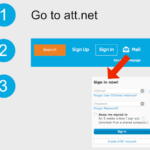The future of automated testing is here and doesn’t require any coding! Automated testing has become an essential part of software development, helping to reduce costs, increase quality, and speed up the development process.
With codeless automation testing, anyone can create powerful automated tests with minimal effort and without coding expertise. In this blog post, we’ll look at the potential of codeless automation testing and how it could shape the future of automated testing.
What is Codeless Automation
Codeless automation is a new way of automated testing that does not require coding. This type of testing uses graphical user interfaces (GUI) and tools such as record and playback to create tests that can be run quickly and easily without writing code.
Codeless automation eliminates manual scripting and coding, allowing testers to focus on the quality assurance process. By using codeless automation, testers can create tests faster and with fewer errors, saving time and money.
Codeless automation is also known as model-based testing and is the process of automating tests using models that represent the application under test. This type of testing is ideal for applications with complex user interface elements or frequent changes to their interface.
By using codeless automation, testers can quickly and easily set up tests, eliminating the need to write code and freeing up more time to focus on other aspects of the testing process.
Benefits of codeless automation
Codeless Automation has gained popularity due to its ability to address a real need and deficiency in the field of QA, particularly for those working in Agile development. Additionally, it offers various benefits that have attracted many to adopt it.
- User-Friendly UI: Codeless test automation tools offer a user-friendly interface with a wide range of features, allowing for a quick and easy experience without coding knowledge.
- Keeps Pace with Development: The use of graphical UI workflows in the design of these tools allows for easy learning and implementation of automation processes, enabling them to keep up with the rapid pace of Agile development through continuous integration and testing.
- Lowers Maintenance Cost & Scalability: Flows in codeless test automation tools can be combined and reused in different testing scenarios. When changes are made to these sub-flows, they are automatically reflected in all test cases that use that module, eliminating the need for manual correction of automation flows.
- Increase Automation Adoption: One advantage of codeless automation tools is that they can be used by anyone within an organization instead of code-based frameworks, which typically require specialized skills to fully utilize. This makes implementing automation across the organization easier and removes a major barrier to its adoption.
- Change Documentation & Greater Process: Codeless test automation tools make it easy to generate detailed visual descriptions of processes, video recordings, and logs, ensuring an accurate and easily auditable record of what occurred during testing.
Drawbacks of codeless automation
Like most things, codeless automation has both advantages and disadvantages. While it offers many appealing benefits, it is important to consider the limitations and potential drawbacks. As with any business decision, it is important to weigh the pros & cons before making a choice.
- Lack of Customization: One potential limitation of codeless test automation is that the automation processes run in the background, with little to no opportunity for testers to modify the scripts.
- Maintainability is difficult: If tests are not designed to be reusable or modular, it may become difficult to maintain them as the number of tests grows and the application changes over time.
- Interoperability problems: Codeless test automation solutions may have platform dependencies or interoperability issues with different browsers and software, which can result in unexpected outcomes and may not be universally applicable.
- Bugs & Glitches: While a computer generates codeless test automation, it is not foolproof and may produce incorrect results if the coverage is not thorough. If the automation script is reusable and modular, this can lead to issues with playback or invalid test results.
The future of codeless automation
Artificial intelligence and machine learning advancements have enabled more intelligent codeless automation tools. In the future, codeless automation tools will be able to detect and identify application problems, enabling companies to resolve issues quickly without manually coding.
AI-powered automation tools can be used to automate repetitive tasks like regression testing, which can help companies identify errors and bugs faster.
As the technology and capabilities of codeless automation tools continue to improve, they are expected to become even more widely adopted and integrated into the testing process. It is important for organizations to stay up-to-date on the latest developments in codeless automation and to carefully consider whether it is a good fit for their specific needs and goals.
Furthermore, codeless automation can also help businesses improve the accuracy of their tests by using automated data sets. Automated data sets allow developers to test complex user scenarios without manually creating data. By using automated data sets, businesses can ensure that their tests are thorough and accurate.
As codeless automation continues to evolve, more companies will likely start to adopt the technology for their testing and development processes. This technology can help reduce costs, improve accuracy, and free up resources, allowing businesses to focus on innovating and developing new products.
With the advancement of artificial intelligence, we can expect more sophisticated codeless automation tools.
Conclusion
Codeless automation is an exciting development in automated testing that has the potential to make testing more accessible and efficient. It provides many advantages over traditional coding-based tests, such as faster test creation, reduced maintenance costs, and simpler use for non-programmers.
Despite its advantages, there are some limitations to be aware of when using codeless automation. For the best experience possible, TestGrid is the ultimate codeless testing tool.
TestGrid provides all the benefits of codeless automation, allowing users to customize their tests, debug them quickly, and get complete test results. With TestGrid, codeless automation can be used to its full potential.







